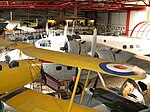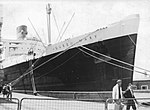Ocean Village, Southampton

Ocean Village is a mixed-use marina, residential, business and leisure development on the mouth of the River Itchen in Southampton, on the south coast of England. Originally the site of Southampton's first working docks, the "Outer Dock" which opened in 1842, the area was redeveloped in 1986 and became the leisure marina it is today. After experiencing a period of stalled development with the late-2000s recession, Ocean Village underwent another series of major, multimillion-pound redevelopment projects. Current recreational facilities include a cinema, cafes, wine bars and restaurants. The marina is managed and owned by Marina Developments Limited (MDL), a division of British-based Yattendon Investment Trust. The area, formerly used for commercial ships, offers 375 berths and the basin is deep enough to provide mooring facilities for tall ships and large yachts. The Global Challenge yacht races started from here in 1992, 1996 and 2000, and the Clipper Round the World Yacht Race set sail from here in 2011. Ocean Village was also the base for the Royal Southampton Yacht Club until 2018. A number of companies have offices in the complex, including PricewaterhouseCoopers. The marina is home to the historical building, Enterprise House, which was originally a dock warehouse and has now been converted into serviced offices.
Excerpt from the Wikipedia article Ocean Village, Southampton (License: CC BY-SA 3.0, Authors, Images).Ocean Village, Southampton
Channel Way, Southampton Ocean Village
Geographical coordinates (GPS) Address External links Nearby Places Show on map
Geographical coordinates (GPS)
| Latitude | Longitude |
|---|---|
| N 50.895 ° | E -1.39 ° |
Address
Ocean Village Marina
Channel Way
SO14 3GR Southampton, Ocean Village
England, United Kingdom
Open on Google Maps









